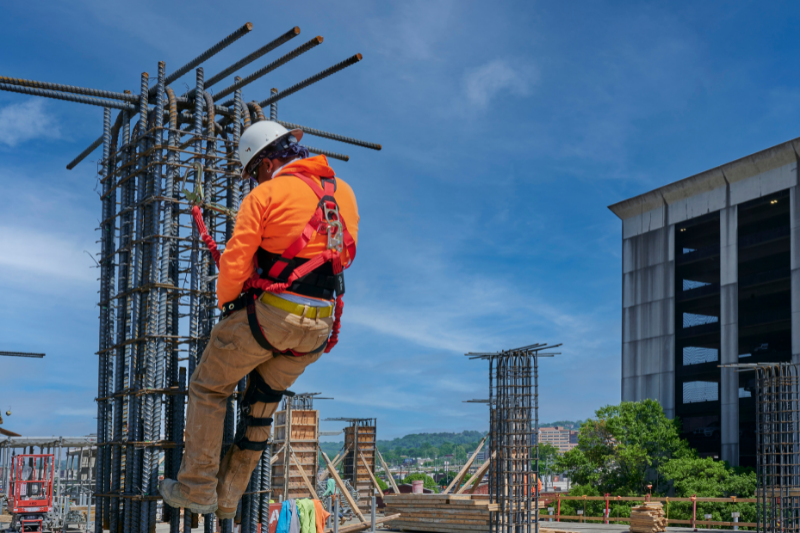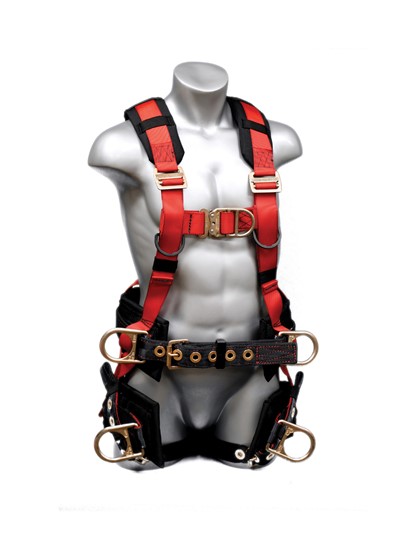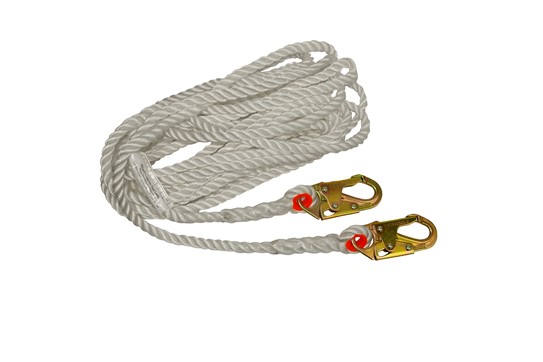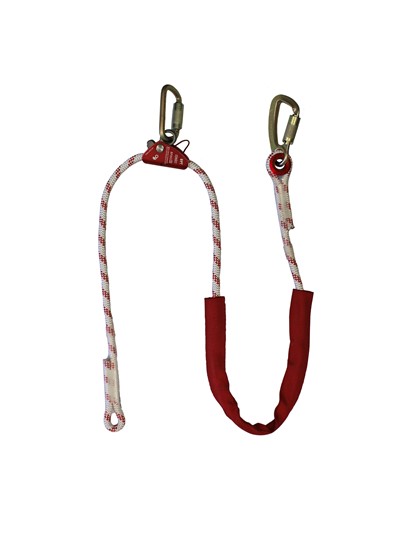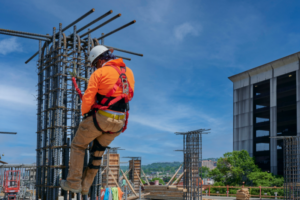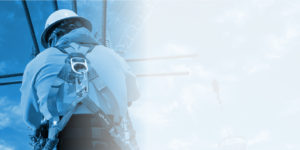Falls are the leading cause of fatalities in the construction industry, the tower industry, and the industrial industry. The right fall protection gear, including fall protection harnesses & their associated hardware, prevents injuries & these tragic fatalities. It’s critical that you understand the requirements and best practices of fall protection systems. Fall protection gear promotes safer working conditions and reduces the risk of injury or death. The proper OSHA-compliant personal protection gear is sure to help keep your team safe, and your business operating.
Elk River began manufacturing Fall Protection Products nearly three decades ago with only twelve products and a handful of employees producing safe and quality products. Today, there are more than 1,600 line items shipped globally.
We are proud to represent quality, safety, and tradition. Our Research & Development team is constantly developing new products and designs to improve the comfort, durability, and safety of our products. Reach for Elk River when you need protection, comfort, and safety. Elk River is not just a brand or product; Elk River is your fall protection partner.
What You Need to Know to Stay Safe and Legal
As an employer, it’s important you understand the risks of an unsafe workplace, not only for your employees but for the overall health of your company. Let’s take a look at how you can ensure your operation is safe for all employees while also meeting all government regulations.
Why is fall protection important?
For Human Safety
Working with dangerous equipment in a fast-paced environment, it’s no surprise that falls are the leading cause of fatalities in the construction industry. According to the CDC, falls accounted for one in three of the total number of fatalities in the industry during 2019. It’s the responsibility and duty of the employer to ensure safe working conditions for all employees.
Not only can a workplace injury have a devastating impact on the employee(s) involved, the costs associated with a workplace injury, including worker’s compensation, can be devastating to an employer’s bottom line. Not only is it imperative to be sure you are protecting your employees’ health and well-being, but also your brand and bottom line as a whole.
Because it’s Law
According to OHSA’s Standard 1926.501 (Source), it is the duty of an employer to provide fall protection systems in certain work environments.
OSHA
OHSA, the Occupational Safety and Health Administration, has set forth guidelines and requirements to assist employers in creating a workplace that prevents employees from falling off platforms, elevated workstations, or into holes and ditches. Established in 1970, OSHA is a part of the federal Department of Labor. Its mission is to prevent workplace illness, injury, and death by providing guidelines and enforcing safety standards. Their number one goal is to create a better, safer working environment for all Americans.
Requirements:
Depending on the industry and application, OSHA has set forth specific height requirements:
- General industry applications require fall protection for workers located 4 or more feet above the ground.
- Shipyard applications require fall protection for any worker located at 5 or more feet above the ground.
- The construction industry requires fall protection for workers located 6 or more feet above the ground.
- Long shoring operations require fall protection for any worker located 8 or more feet above a below surface (including water).
It’s important to note that there are times when personal protective gear is required though no height is involved. If an employee is working above dangerous equipment or machinery, or any hazard they could fall into, they must have personal fall protection or guardrails at all times.
Fall protection can be in the form of a guardrail, though when that is not a viable option, personal protective equipment such as harnesses, lifelines, and lanyards are required by law.
Not only does OSHA provide height requirements depending on the industry, but they also offer general requirements for all workplace applications.
By law, OSHA requires employers to:
- Provide working conditions free of known dangers.
- Keep floors in work areas clean and in a dry condition.
- Provide required personal protective equipment at no cost to workers.
- Conduct employee training by a competent person regarding job hazards in a language the employee can understand
Failure to comply with these regulations may result in citations and hefty fines – ranging from $14,000 to $145,000 per violation for repeat offenders. Given these fines can be applied to each instance or citation, a charge of the sort can not only be devastating to your bottom line, but also to your reputation.
Guidelines to Help Employers
OSHA provides employers with specific guidelines to help address fall hazards. These include:
- Guardrails and handrails, personal fall arrest systems, and safety nets are recommended methods for any surface with an unprotected side or edge that’s six feet or more above a lower level.
- Guardrails and toe-boards are the recommended fall protection when an employee works over dangerous equipment or machinery, such as conveyor belts or vats of hazardous materials.
- A railing and toe board (or a cover) can be used to cover exposed holes in the floor and open-sided platforms, floors, and runways, to prevent employees from falling.
- Employers should have continuous training programs to educate workers on height-related hazards, notify them of the dangers posed by working at any height, and how to remain safe on the job.
In 1997, OSHA responded to a request for a reevaluation of Section 1926.501(b)(5) to ensure the standard properly addresses fall protection for pre-assembled rebar assemblies. This clarified rule states that fall protection is not required while an employee is in motion up to 24 feet, meaning fall protection is not necessary for employees climbing on or moving on built-in-place rebar assemblies at heights below 24 feet. Though, employers are required to provide safety equipment to employees working on rebar assemblies once those employees have reached their workstations or have moved to points at least 24 feet above a lower level. (Source)
Other Employer Resources
In partnership with the National Institute for Occupational Safety and Health (NIOSH) and National Occupational Research Agenda (NORA) – Construction Sector, OSHA has created a nationwide outreach campaign to raise awareness about common fall hazards in construction and how to prevent them. OSHA emphasizes that falls can be prevented through three important and highly effective steps:
- Plan ahead to get the job done safely
- Provide the correct equipment
- Train everyone to use the equipment safely and properly
Backed by Elk River’s excellent customer service department, we are equipped to discuss any specific applications you may encounter – your safety is our priority. For nearly 30 years, our focus has been putting our customers and their families first – never sacrificing quality in an effort to preserve margin. The combination of values, quality, and expertise allows us to provide the highest level of quality and service.
When it comes to falling in the workplace, you can never be too safe. No matter your industry, Elk River has quality fall protection equipment to keep you and your team safe. Contact us today to discuss your needs and what Elk River can do to keep your operation safe, legal, and effective. We are your source for all your fall protection needs – Elk River is your fall protection partner.

